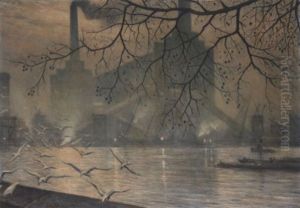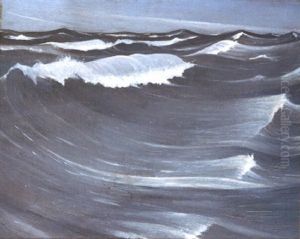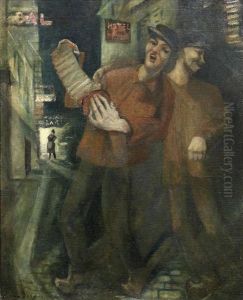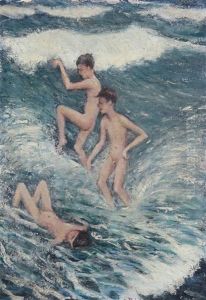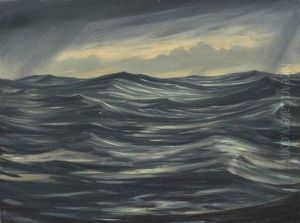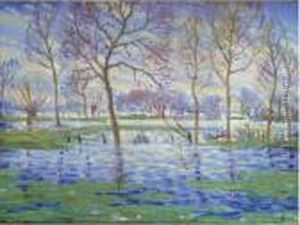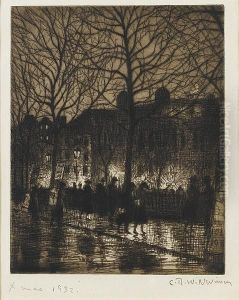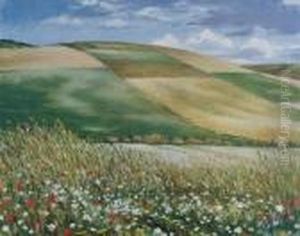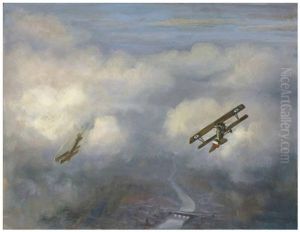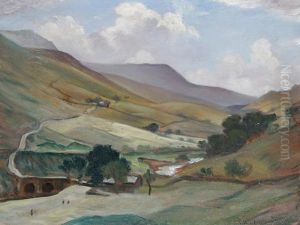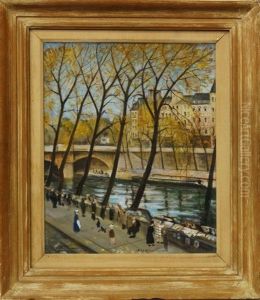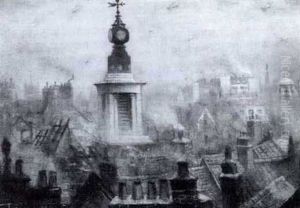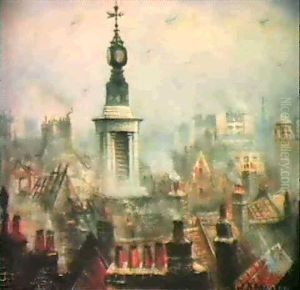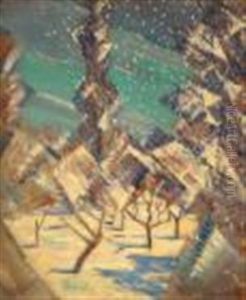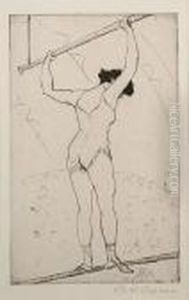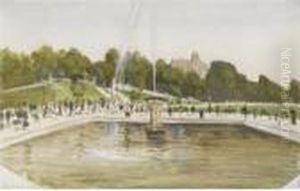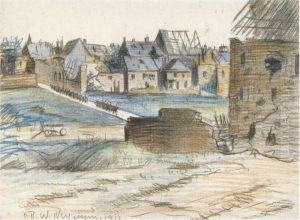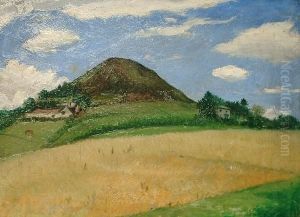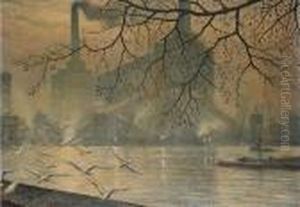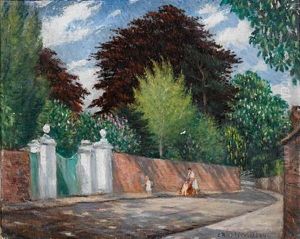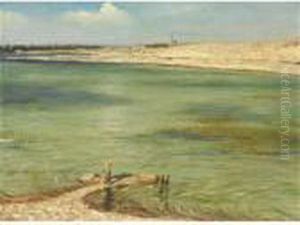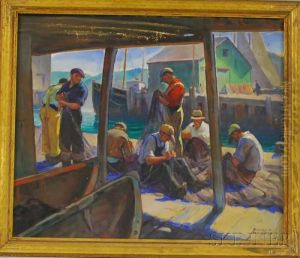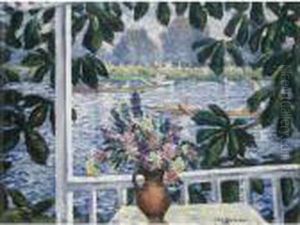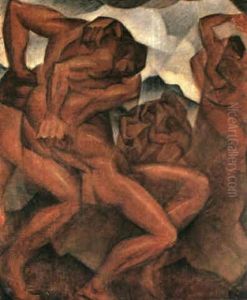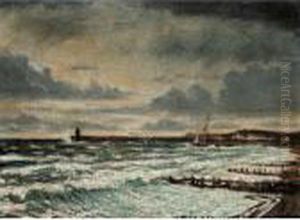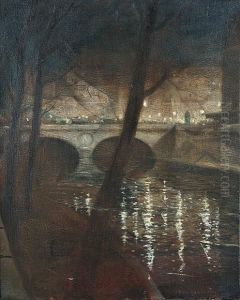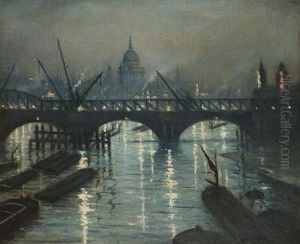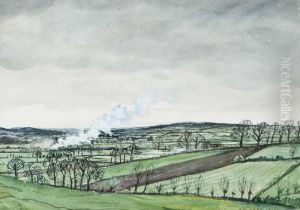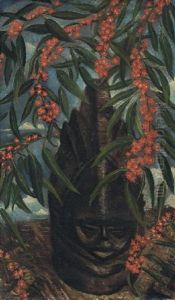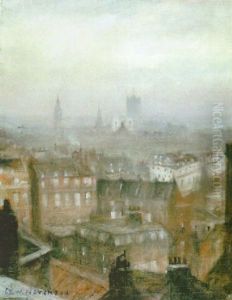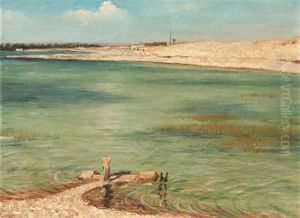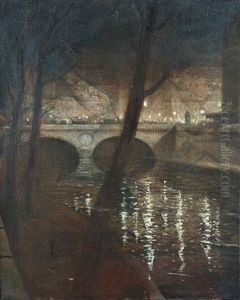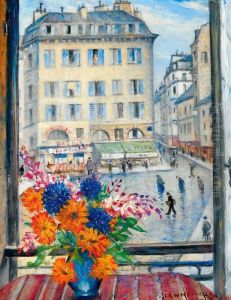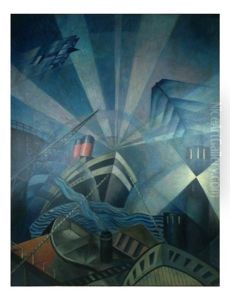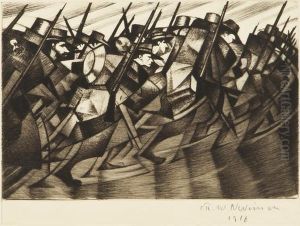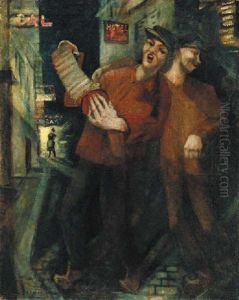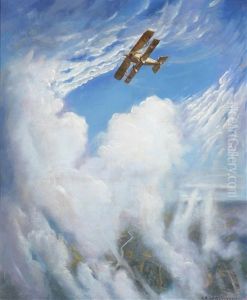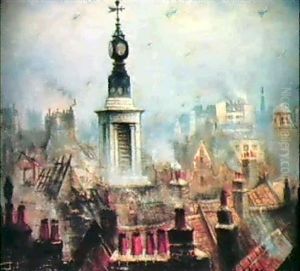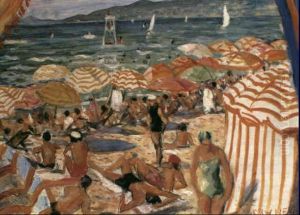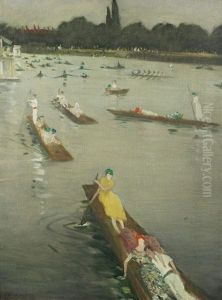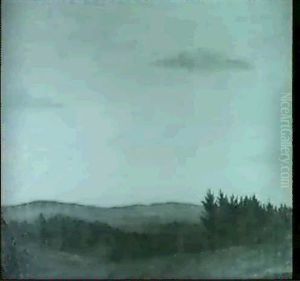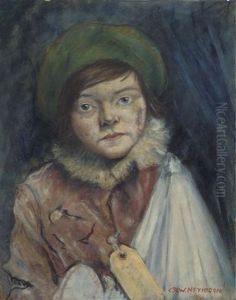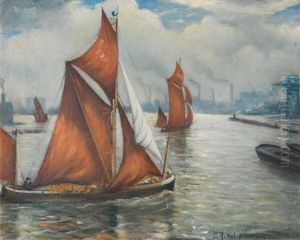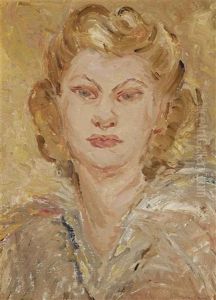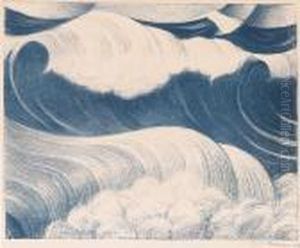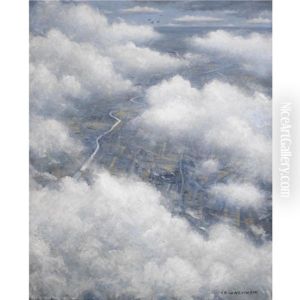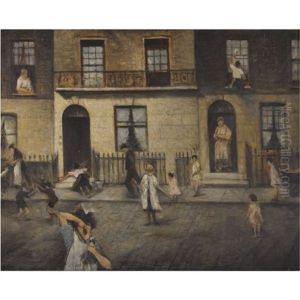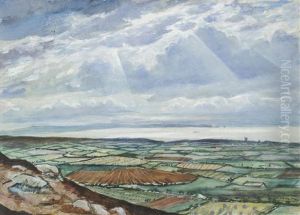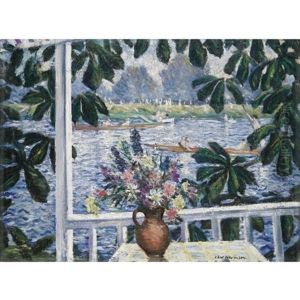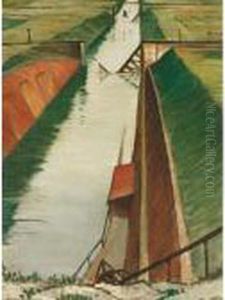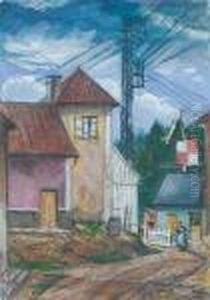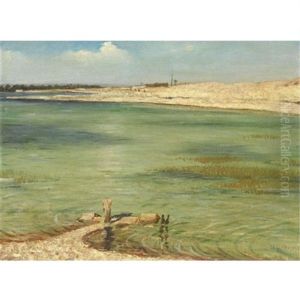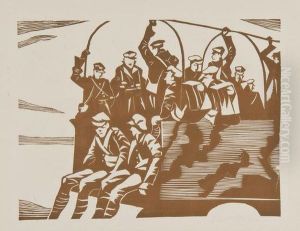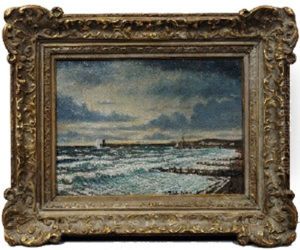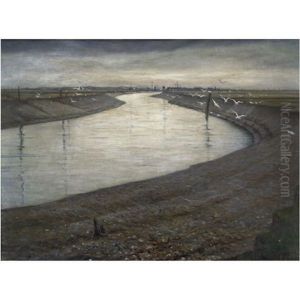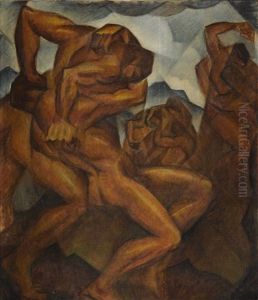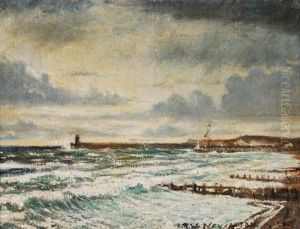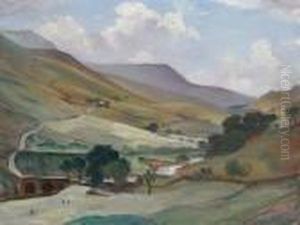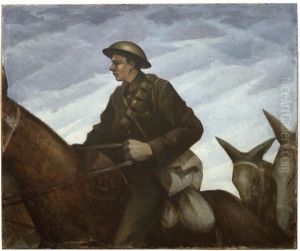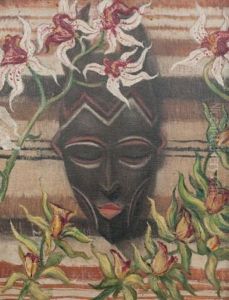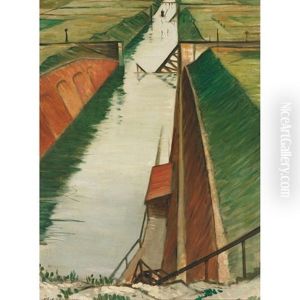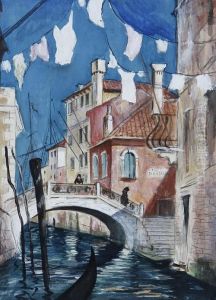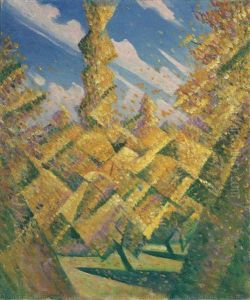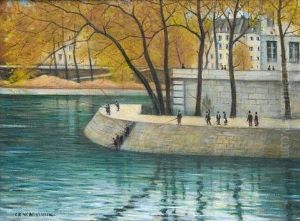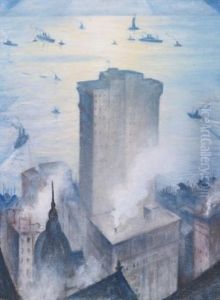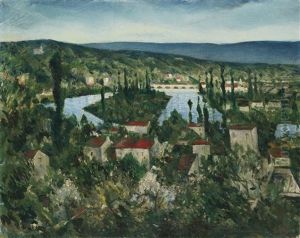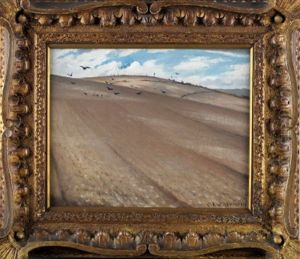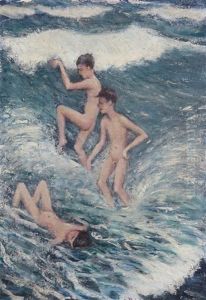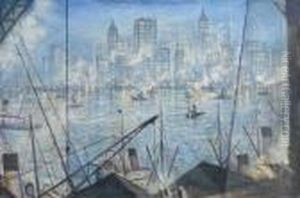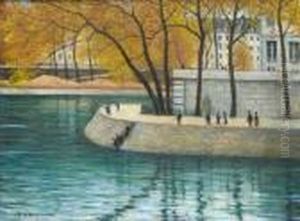Christopher R. Wynne Nevinson Paintings
Christopher Richard Wynne Nevinson was an English figure and landscape painter, etcher, and lithographer, who was one of the most famous war artists of World War I. He was born in London on August 13, 1889, to the war correspondent and journalist Henry Nevinson and the suffrage campaigner and writer Margaret Wynne. He studied at the St John's Wood School of Art and later at the Slade School of Art, where he developed his skills and was influenced by fellow artists and teachers.
Nevinson's early work was in line with the Futurist and Cubist movements, and he was a founding member of the short-lived London Group, which was an amalgam of the Vorticist and Bloomsbury movements. He embraced the dynamism and energy of the modern city, and his pre-war works such as 'Returning to the Trenches' convey the sense of speed and mechanical power that characterized those artistic schools.
During World War I, Nevinson served as an ambulance driver and later as an official war artist. His firsthand experience of the front lines profoundly influenced his art, as seen in his stark, often geometric portrayals of the dehumanizing aspects of war. His paintings and prints from this period, such as 'La Mitrailleuse' and 'Paths of Glory', are among the most iconic images of the war and reflect the brutality and suffering he witnessed.
After the war, Nevinson's style evolved, but he never achieved the same level of acclaim as he did with his wartime works. He struggled to find a new direction, and although he continued to paint cityscapes, portraits, and landscapes, the reception to his later work was mixed. Nevinson's health declined in the 1930s, and he passed away on October 7, 1946, in London.
Nevinson is remembered today for his powerful depictions of World War I, and his works are held in many major collections, including the Imperial War Museum in London and the Tate Gallery. His contribution to war art and his early adoption of Futurism and Cubism in the British context mark him as a significant figure in 20th-century British art.
